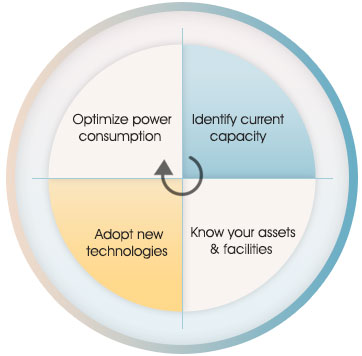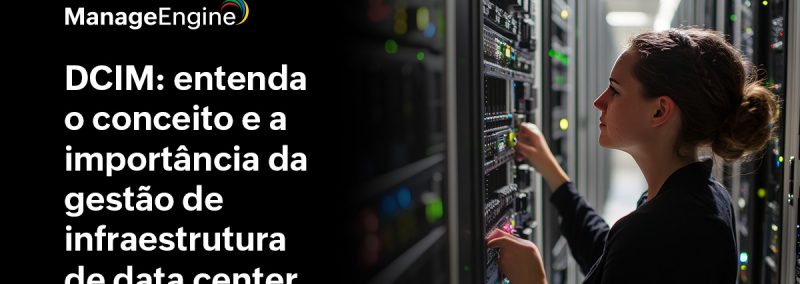Data center consolidation helps you effectively utilize your resources to meet growing business needs, without increasing the data center’s footprint. However, consolidating a data center’s resources is a difficult process, because large enterprises expand their data centers constantly to meet new business challenges. New hardware boxes are added constantly to handle the load, which in turn increase the hardware and maintenance footprint, increasing the opex.
Here are four tips that you can follow to consolidate your data center easily:
- Identify your data center’s current capacity
- List/catalog the assets and facilities available
- Adopt new technologies such as virtualization, SDN, and SDDC
- Optimize power consumption
Identify current capacity
This information is crucial for consolidation. Therefore, identify how much load your data center is handling and its actual capacity. You can also identify capacity at the device level. In fact, in most of the data centers, several devices are underutilized because of over provisioning or improper management.
VM sprawl is a classic example of over provisioning, where the number of VMs in a data center increases rapidly, because VMs can be created easily. You can avoid this by frequently auditing and effectively monitoring the VMs. Similarly, auditing your assets and facilities can help consolidate your data center resources.
Catalog the assets and facilities
A thorough inventory of all assets is essential for consolidation. Effective asset management, complete with relationship mapping, helps you identify the devices associated to a particular service. This will help you identify the under- and over-utilized devices and optimize them accordingly. Asset management also helps you understand the life cycle of the devices in your data center. You can then proactively identify and replace end of life (EOL) devices. You will also be able to be gauge the free space available in the data center to fulfill dynamic business needs.
Adopting a 3D data center visual modeling solution helps obtain better visibility into the available facilities. In fact, having an integrated asset and facilities management solution will make your job easy.
Adopt new technologies
Technologies such as virtualization, SDN, and SDDC play a major role in data center consolidation. These technologies decouple the computing, networking, and storage from the underlying hardware and help you expand your services without adding any hardware.
Besides these technologies, hardware vendors such Cisco and IBM have introduced converged infrastructure devices that pack hundreds of VMs bundled with the required networking and storage devices in a single rack. These agile and compact devices help you meet your business needs without any additional hardware. Although the capex of such devices are high, their ROI is good; stands at 177% according to Cisco. They also reduce the opex and maintenance costs.
Optimize power consumption
Data centers spend much on energy. Similar to the VM sprawl, the PDUs in the data center are underutilized. The number of servers connected to a PDU depends on the power unit mentioned in the server’s specs. However, in reality, servers consume less power and more severs can be connected to a PDU. You can ascertain this only by using an efficient power monitoring solution.
In most of the data centers, 37% of the total power is supplied for cooling devices, such as CRAC, and not the actual computing devices, such as servers and routers. By efficiently monitoring and solving hardware temperature issues, you can optimize power consumption of the cooling devices by more than 30%. You can also reduce the number of cooling devices. However, this could mean more racks in the data center.
Benefits of data center consolidation
• Reduced operations cost
• Reduced footprint
• Reduced maintenance
• Improved energy efficiency
• Optimum use of devices
Best-in class and scalable DCIM solution
Besides these steps, to consolidate your data center, you need a comprehensive DCIM solution that provides IT operations management, asset and facilities management, and energy management. Only then you will be able to have a bird’s eye view of your data center and consolidate it.
